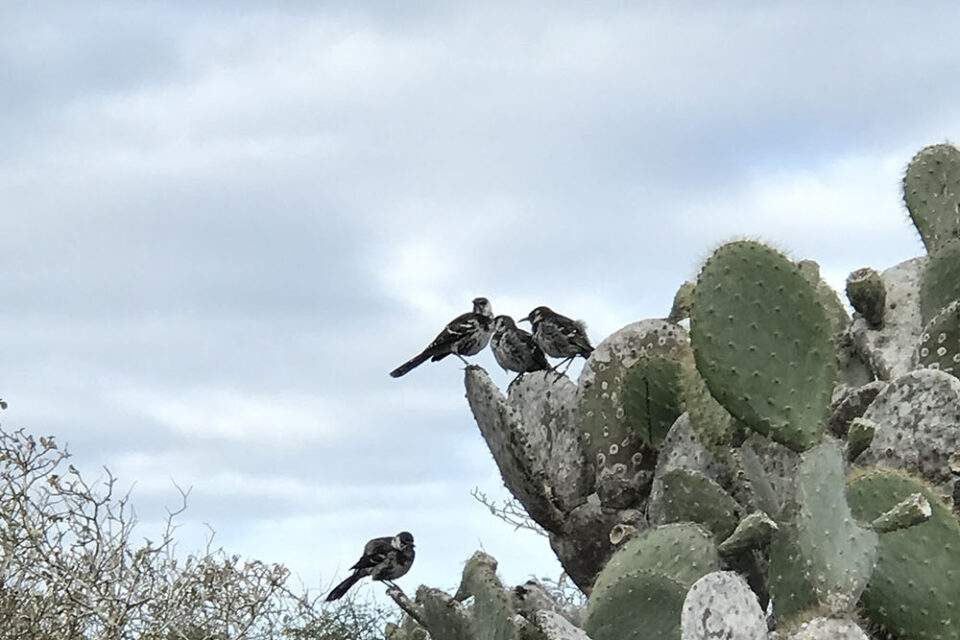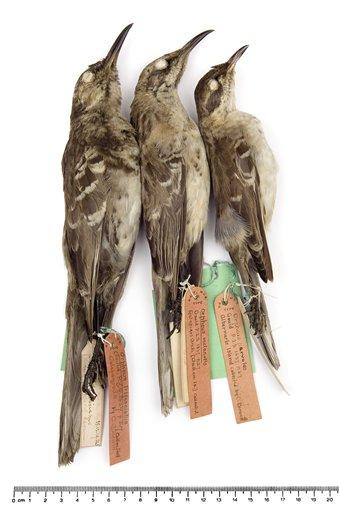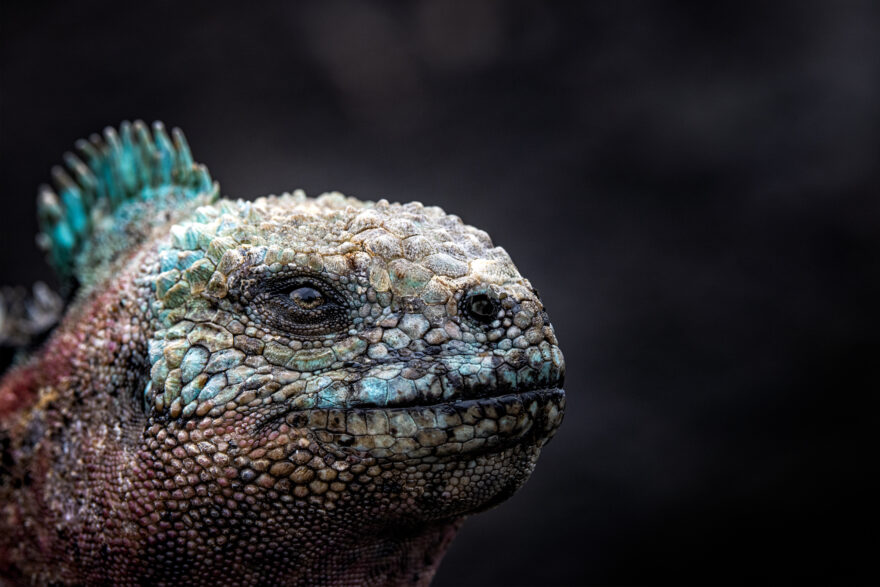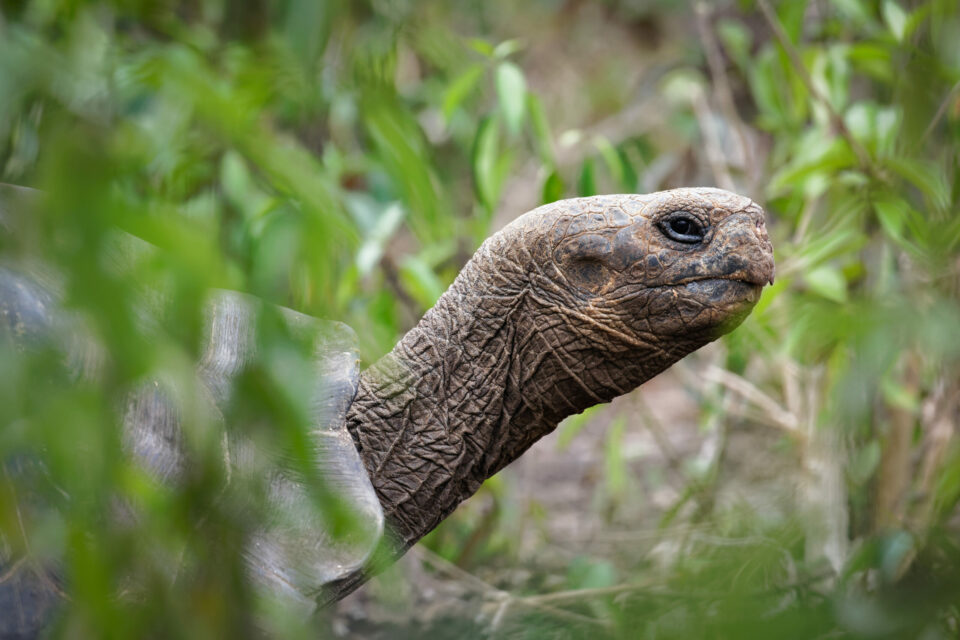

How the Galapagos mockingbird got its name…
Four species of mockingbird can be found in Galapagos, none of which occur anywhere else on Earth.
“Mockingbirds don’t do one thing but make music for us to enjoy. They don’t eat up people’s gardens, don’t nest in corncribs, they don’t do one thing but sing their hearts out for us. That’s why it’s a sin to kill a mockingbird.” Harper Lee, To Kill a Mockingbird
Metaphors aside, this quote from Harper Lee’s famous book states that “it’s a sin to kill a mockingbird”. Fortunately, a hundred years before the book had even been written, a young Charles Darwin didn’t share this view, for if he had he may never have published his famous book. During the voyage of HMS Beagle, Darwin shot and collected hundreds of specimens including a good number of mockingbirds, or mocking-thrushes as he called them. It was these specimens more than any other that led him to develop his theory of evolution by natural selection.
Darwin noted that mockingbirds differed slightly between islands in their size, beak shape and markings but still closely resembled the mockingbirds that he had collected from mainland South America. This, along with other observations such as the differing shell shapes of giant tortoises, made him question the long-held belief that all species had been created in their current form, and it was these thoughts that led him to formulate his revolutionary theory.
Four species of mockingbird can be found in Galapagos, none of which occur anywhere else on Earth. Genetic analysis has shown that all have descended from a common ancestor, likely to be the original Galapagos settler, who’s closest living relatives are the mockingbirds found in North America (click here for a paper on their diversification).
The Galapagos mockingbird (Mimus parvulus) is by far the most common of the four species within the Archipelago and can be readily spotted in the forests and shrublands of many of the larger islands. The other three species are the Espanola (M.macdonaldi), San Cristobal (M.melanotis) and Floreana mockingbird’s (M.trifasciatus), named after the islands from which they originate. Sadly, all four species are listed on the IUCN Red List of Threatened Species, the most threatened being the critically endangered Floreana mockingbird.
Once common on Floreana, the mockingbird population is now restricted to two small satellite islands and may number less than 200 individuals. The principal threats to all of the mockingbird species are predation from introduced predators (namely rats and cats) and loss of their favoured nesting and food source, the prickly pear cactus (Opuntia spp.). Fortunately, a long-term project which GCT has been involved with is focusing on restoring Floreana to a more natural state, the hope being to eventually reintroduce the Floreana mockingbird back onto its native island.
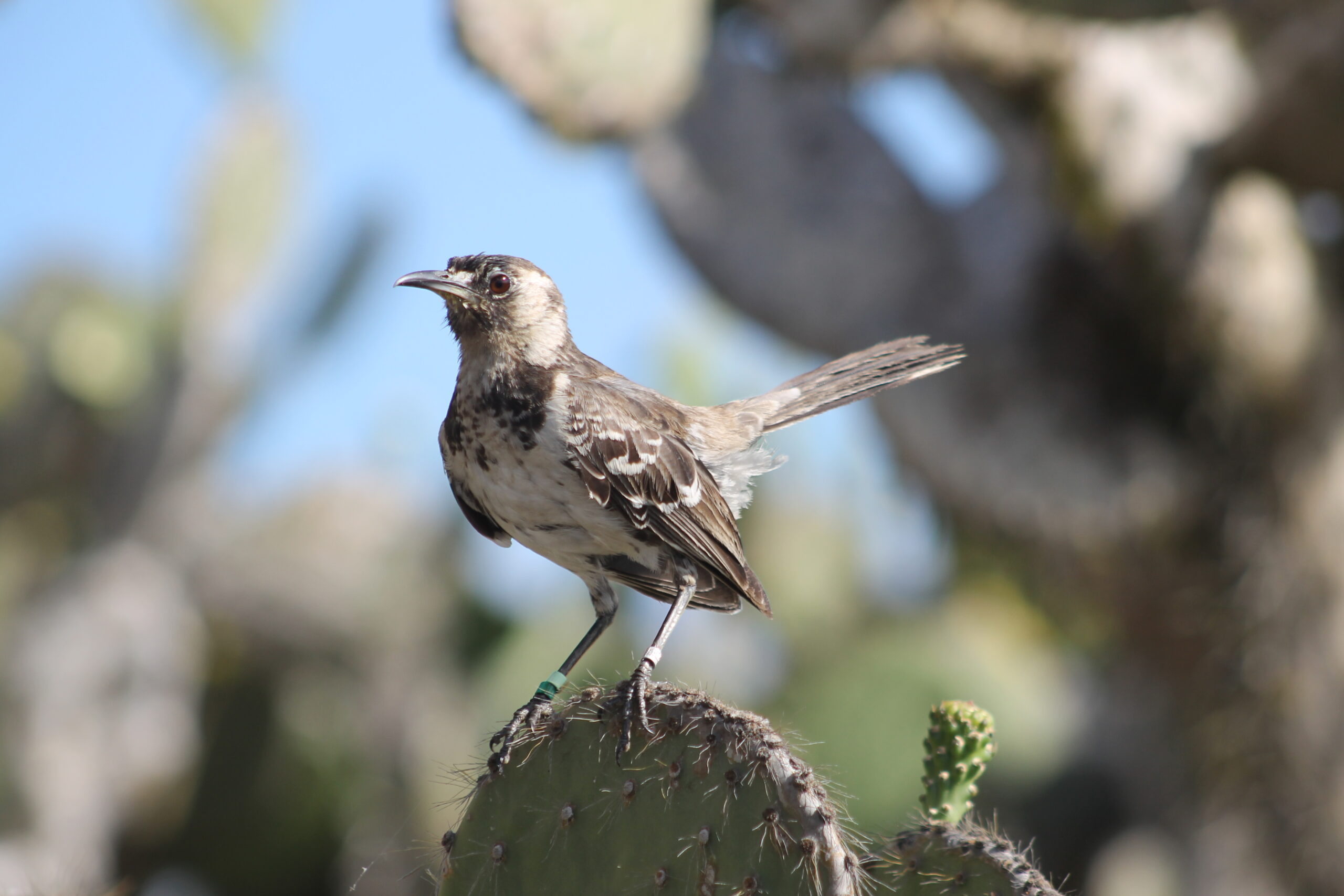
Originally named mock-birds (1640’s), mockingbirds are so named due to an interesting behaviour carried out by some species whereby they mimic the calls of insects, amphibians and other bird species. None of Galapagos’ mockingbirds perform their namesake behaviour, but they do have a series of calls which they will use under different conditions.
Amazingly, marine iguanas appear to have learnt to recognise the alarm calls of mockingbirds and have been shown to act upon them. Sounded when a predator is spotted, iguanas will often go into a heightened state of alert when an alarm call is raised. This makes sense given that the two share many of the same predators, such as the Galapagos hawk (Buteo galapagoensis), but it actually has a uniqueness to it. Whilst there are many examples in the natural world of one species reacting to the calls of another, such as meerkats reacting to fork-tailed drongo alarm calls in the Kalahari, this is the first time that it has been recorded in a non-vocalising species such as the marine iguana (an article on this behaviour can be found here). Another little Galapagos oddity!
There seems to be a strange irony in the fact that the bird that played an integral part in Darwin’s theory of evolution has evolved to no longer show the behaviour that gave it its name. What is certain is that these bold and charming birds are always a pleasure to watch in Galapagos, and are just one more reason to conserve this wonderful archipelago.
For information on how you can support conservation in Galapagos, please visit our website.
Related articles

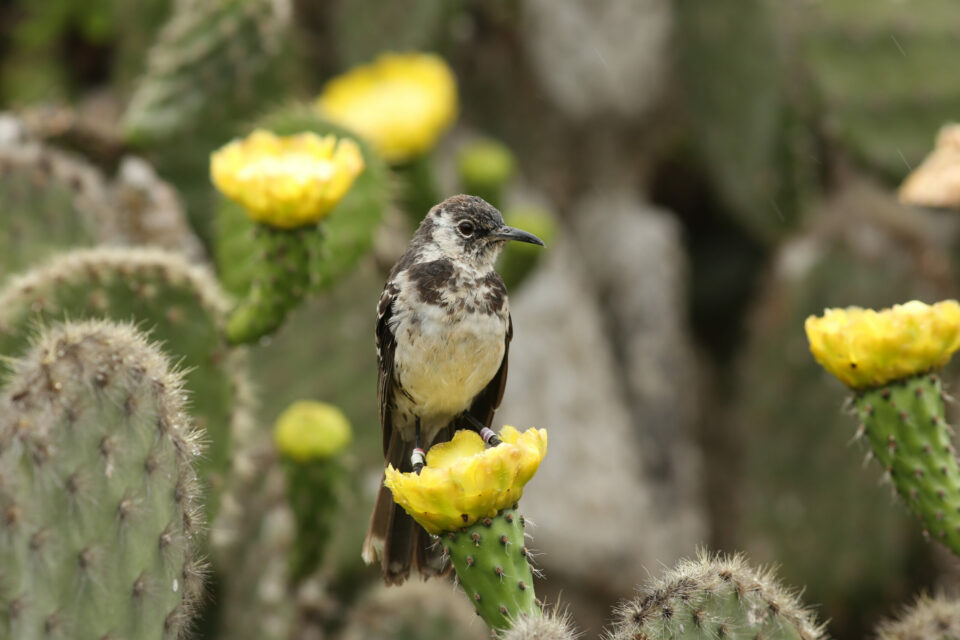
12 missing species set to return to Floreana

How to save a mockingbird
